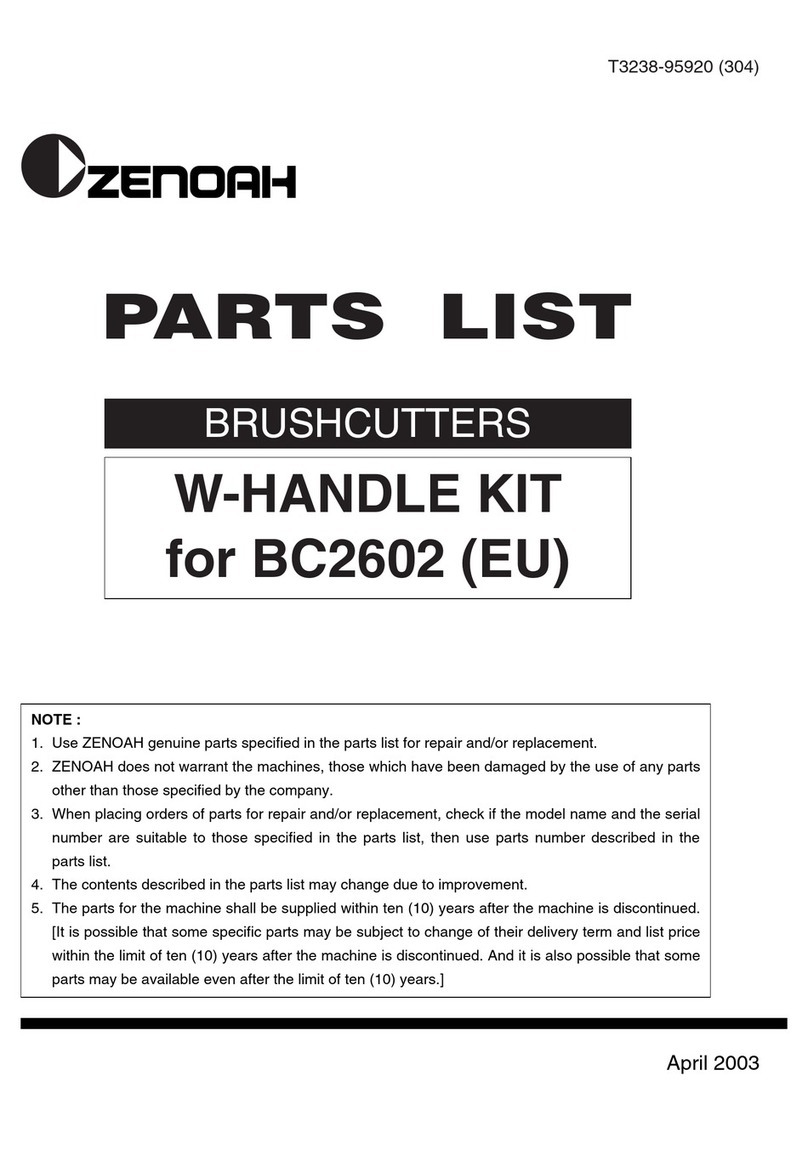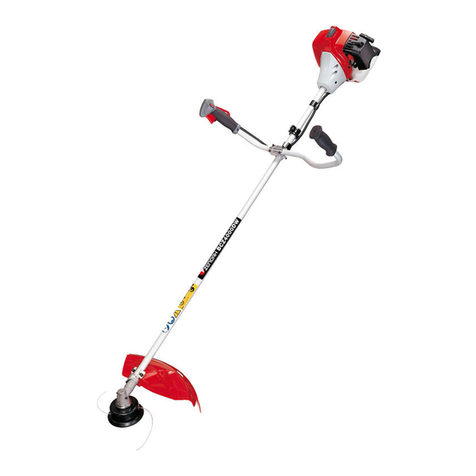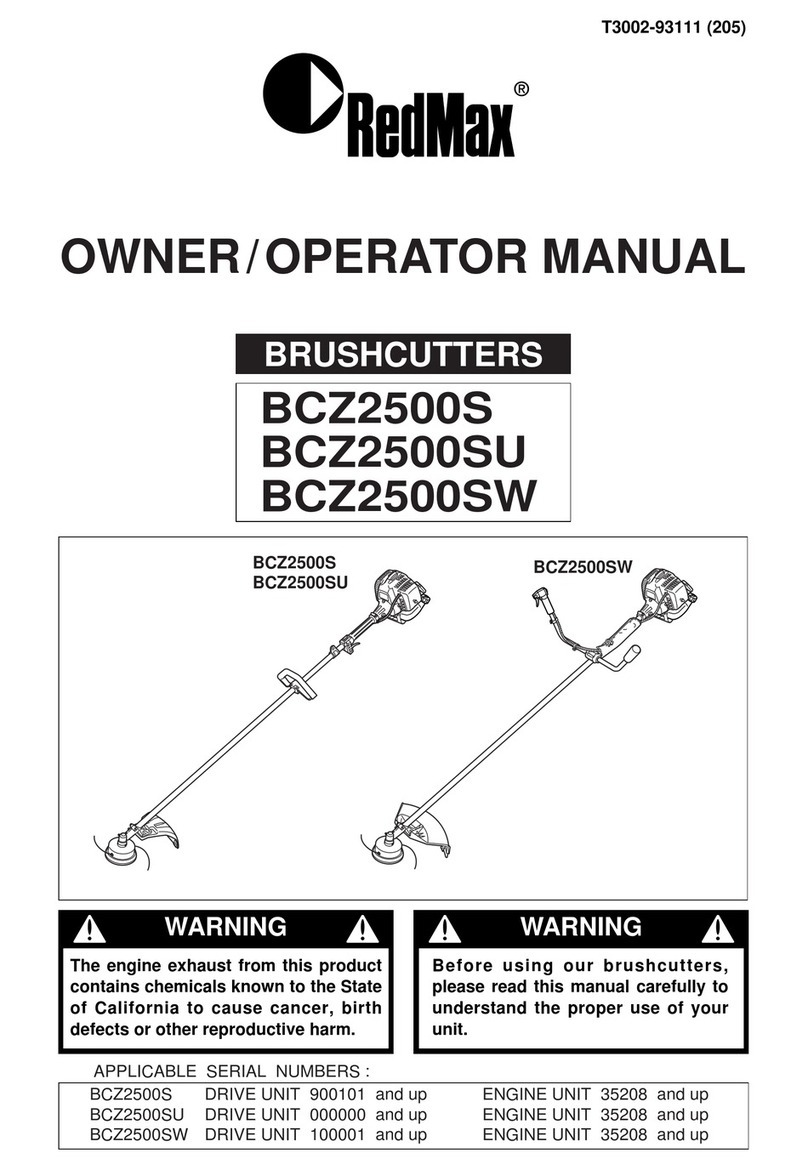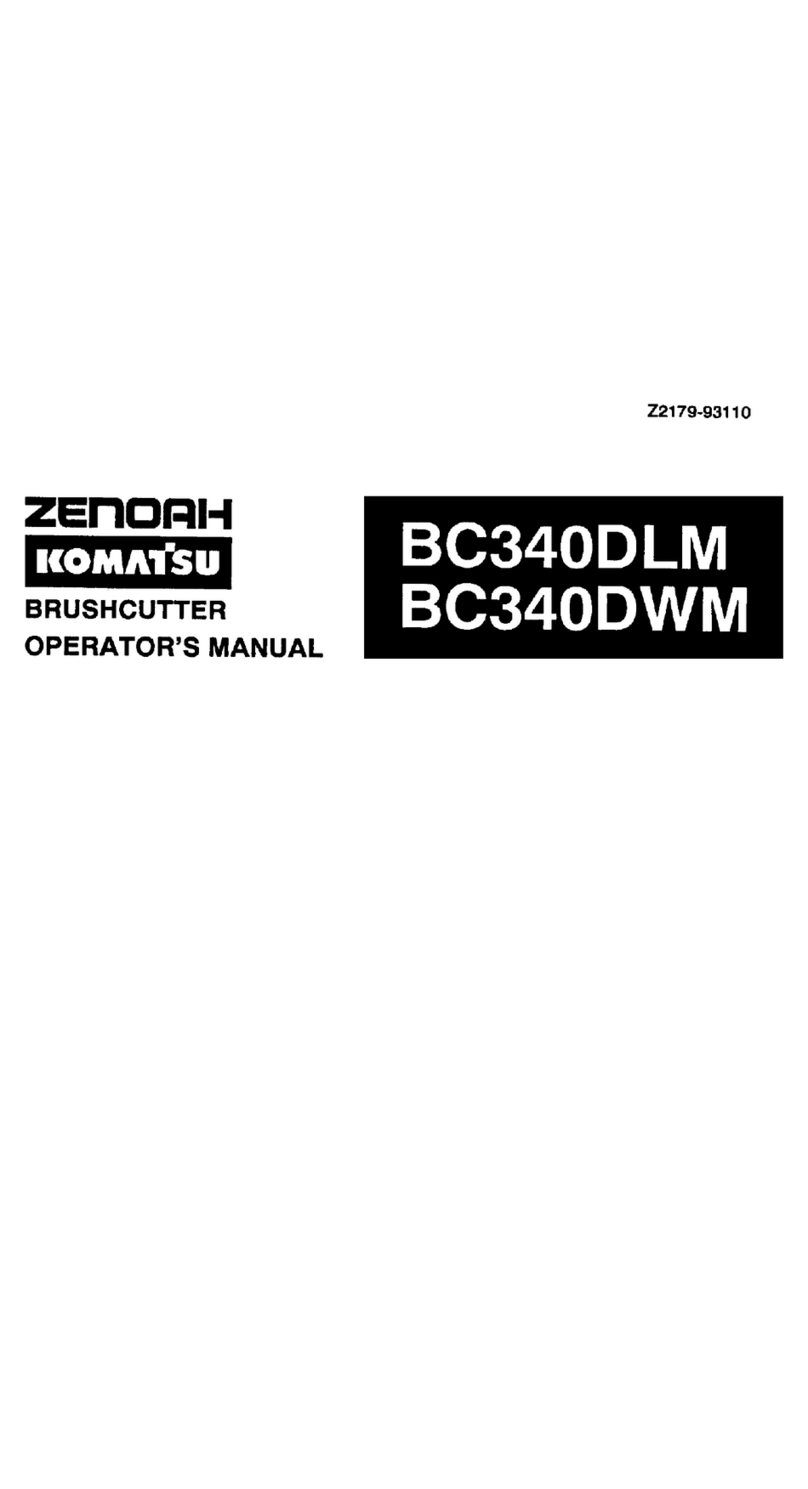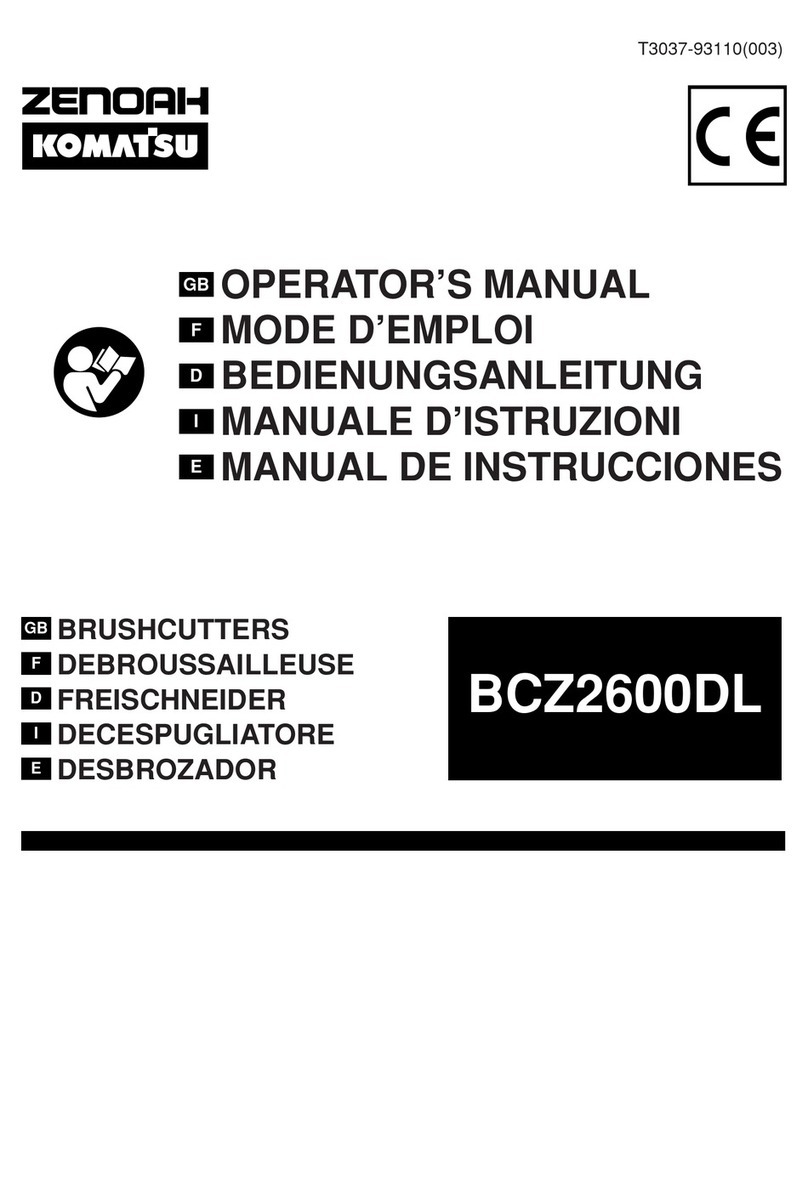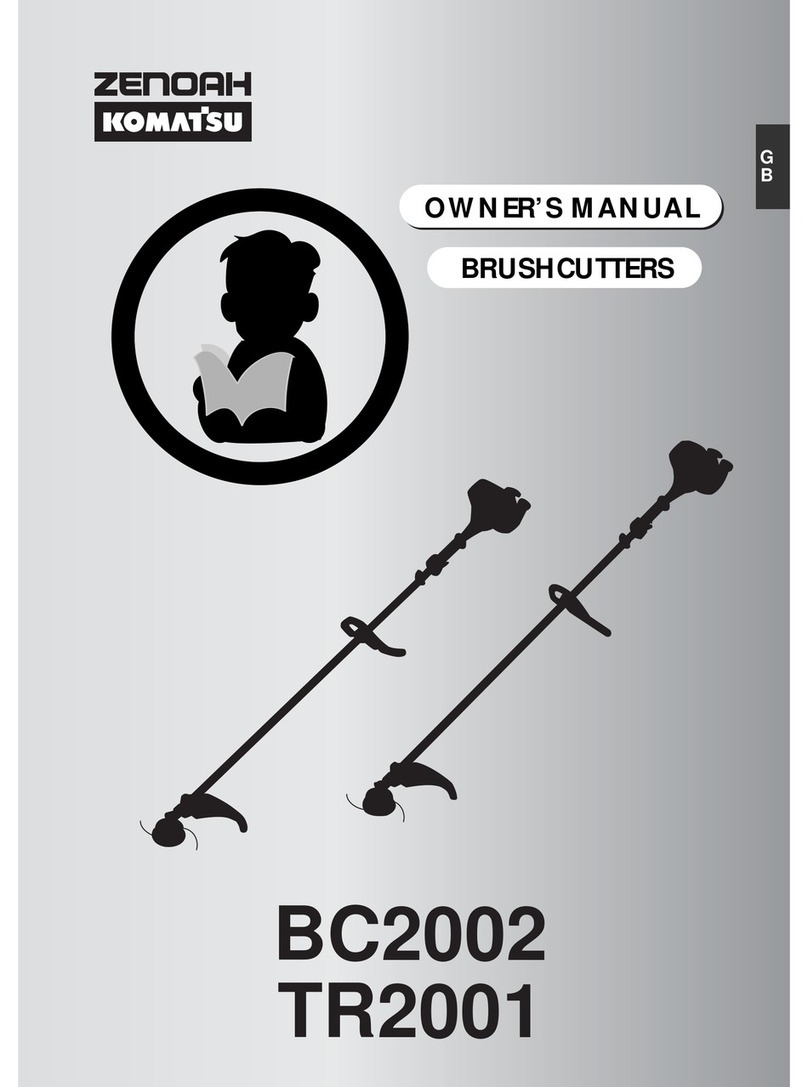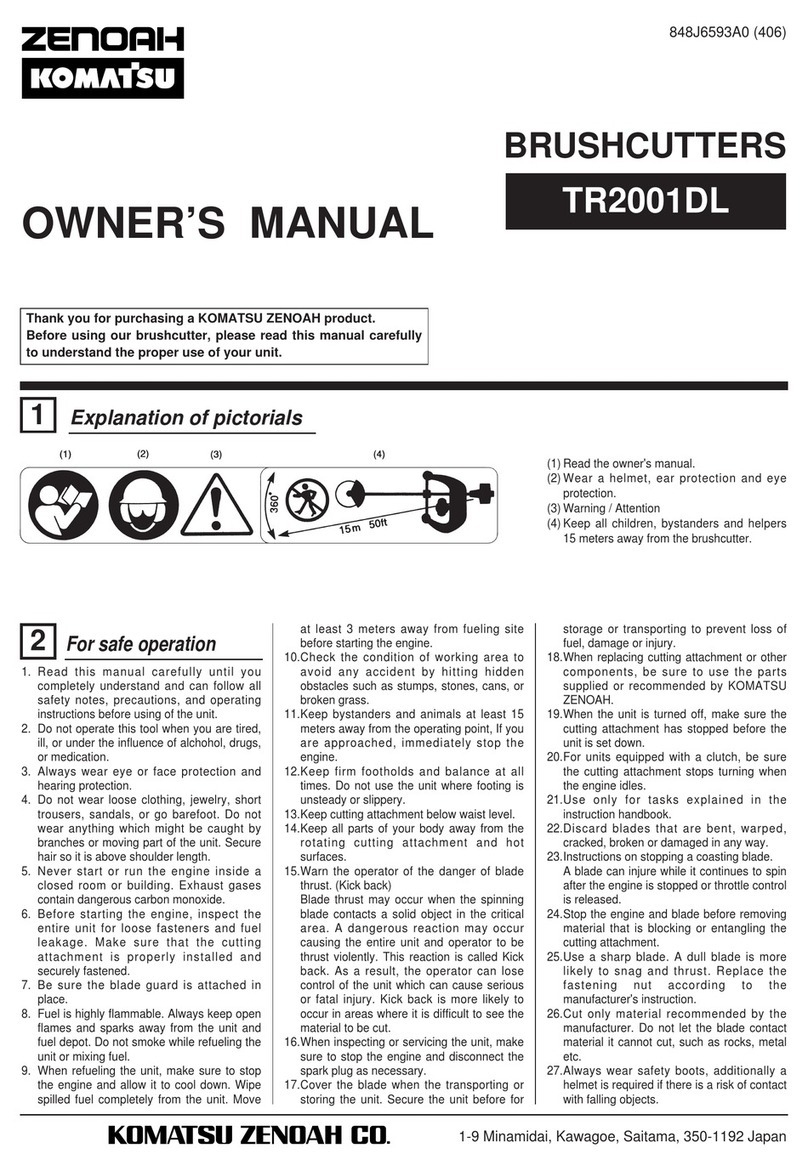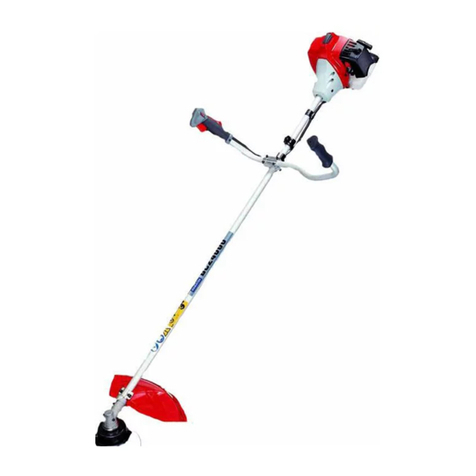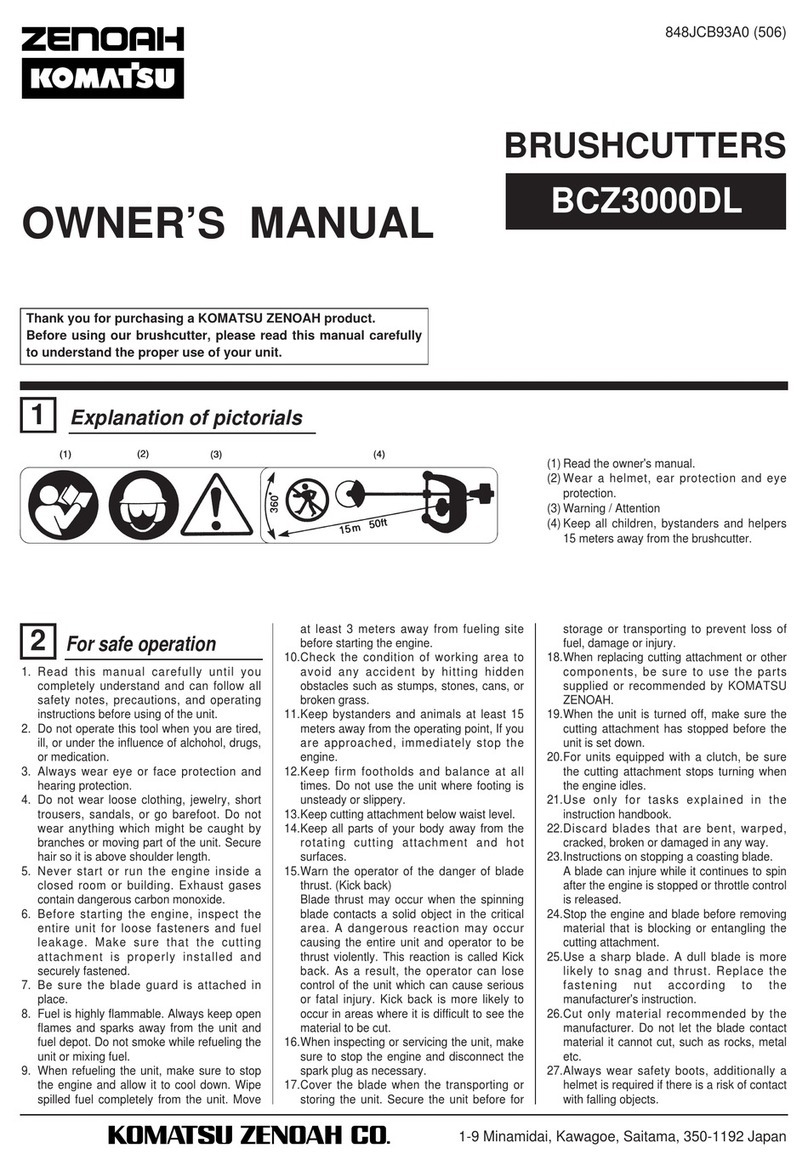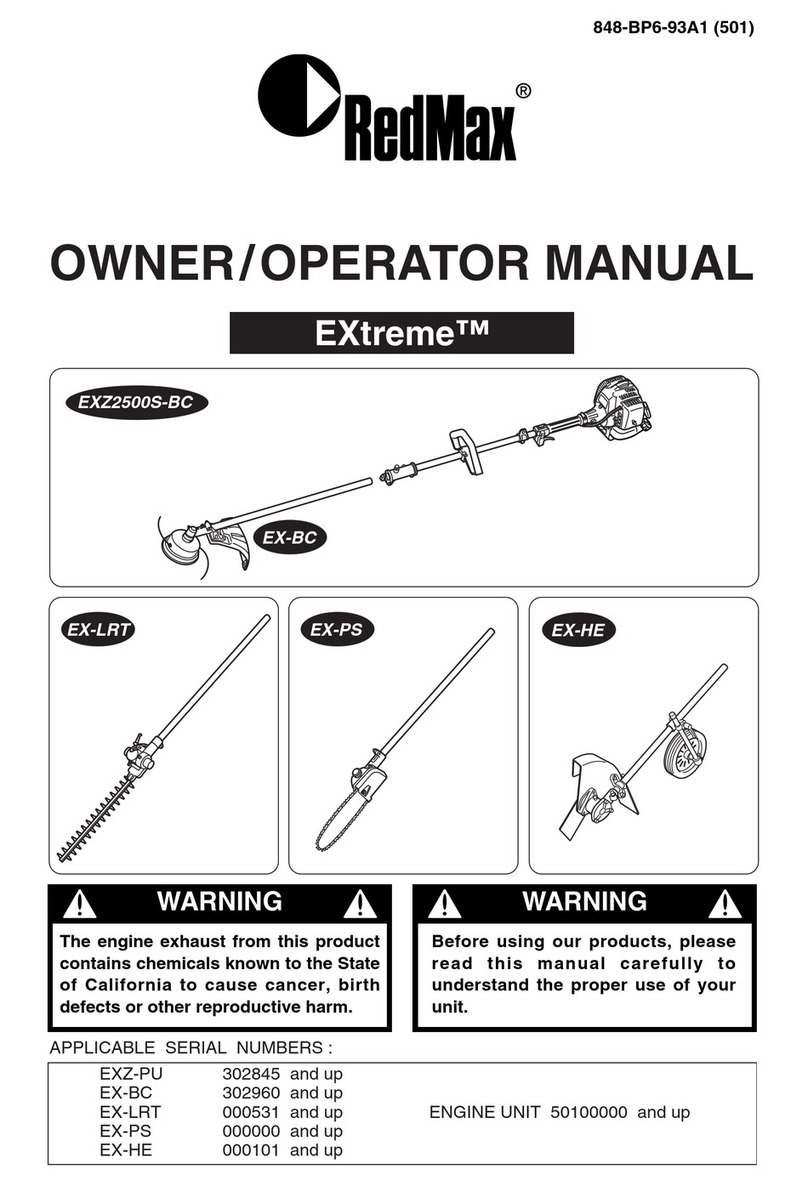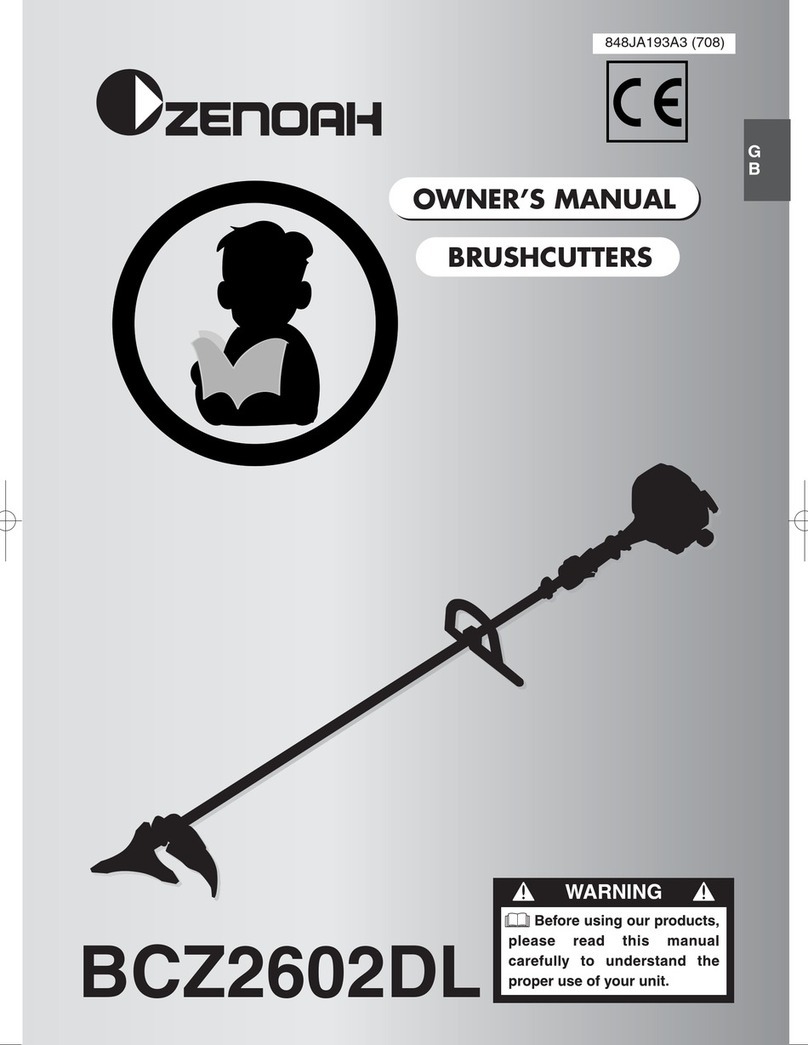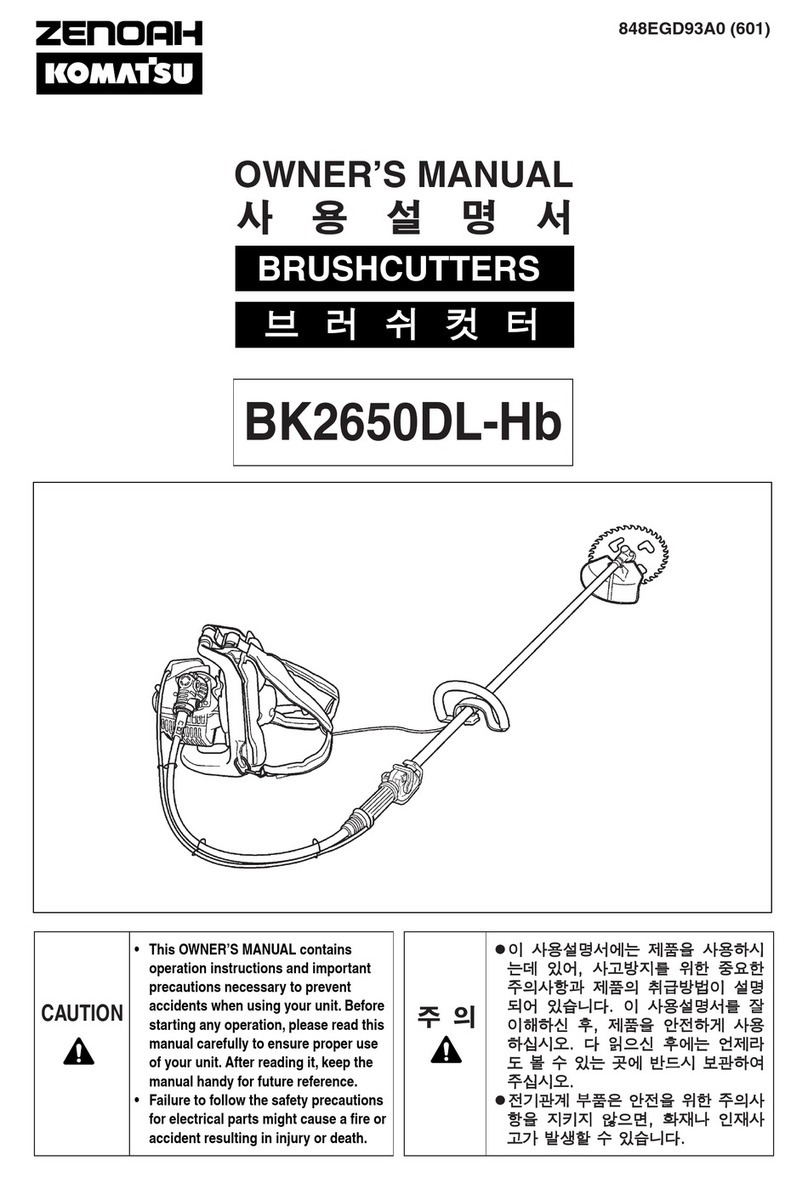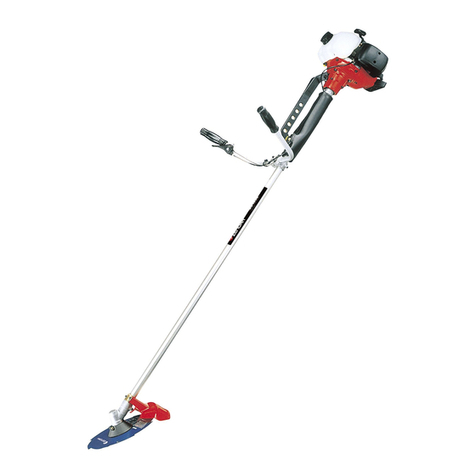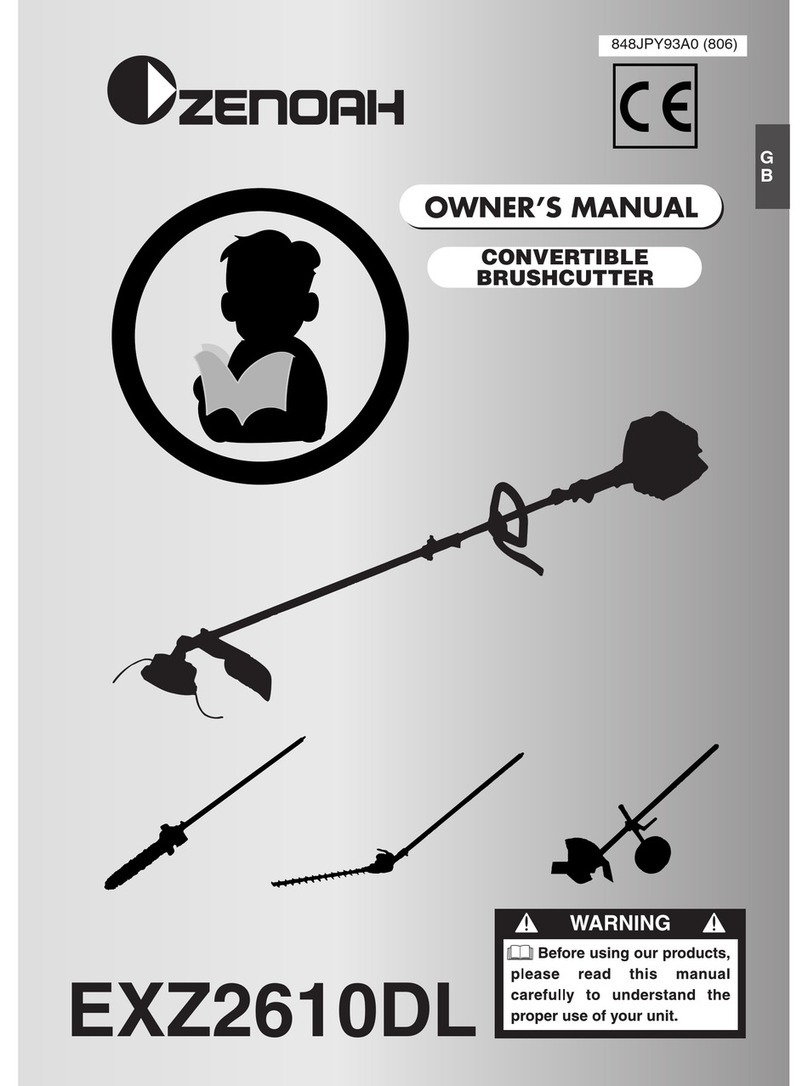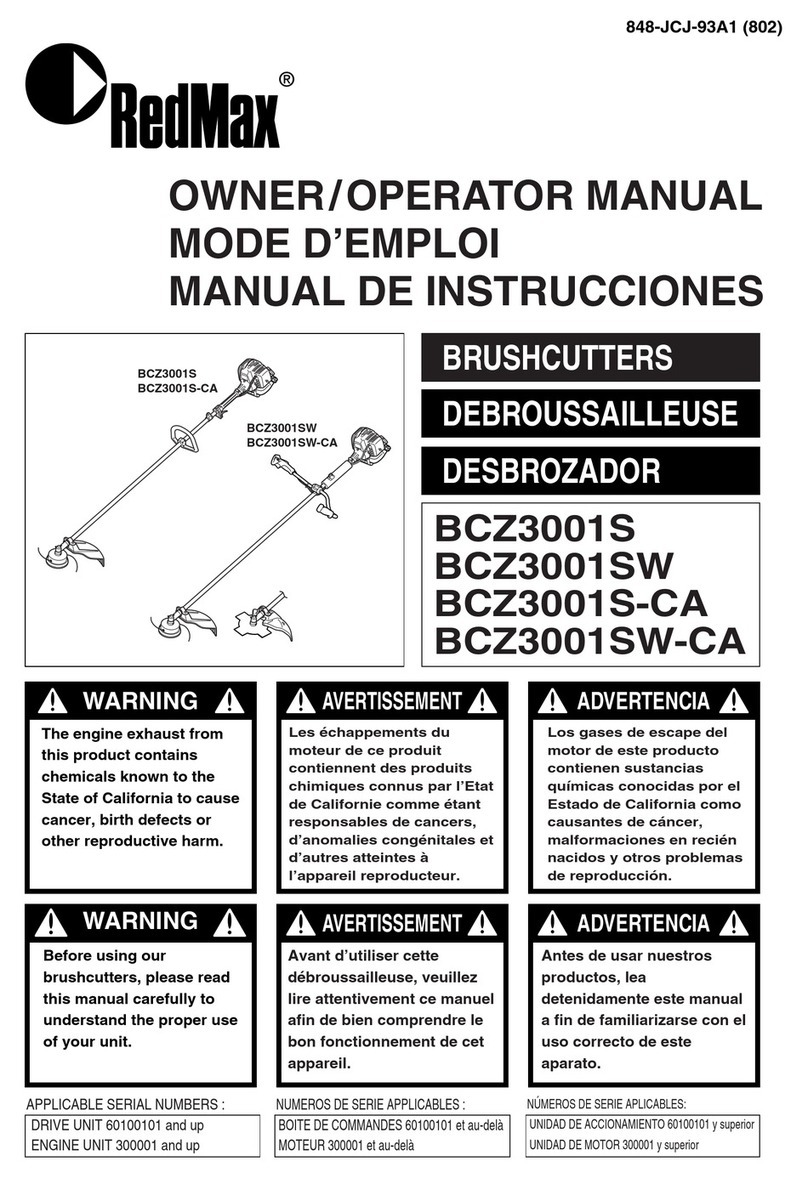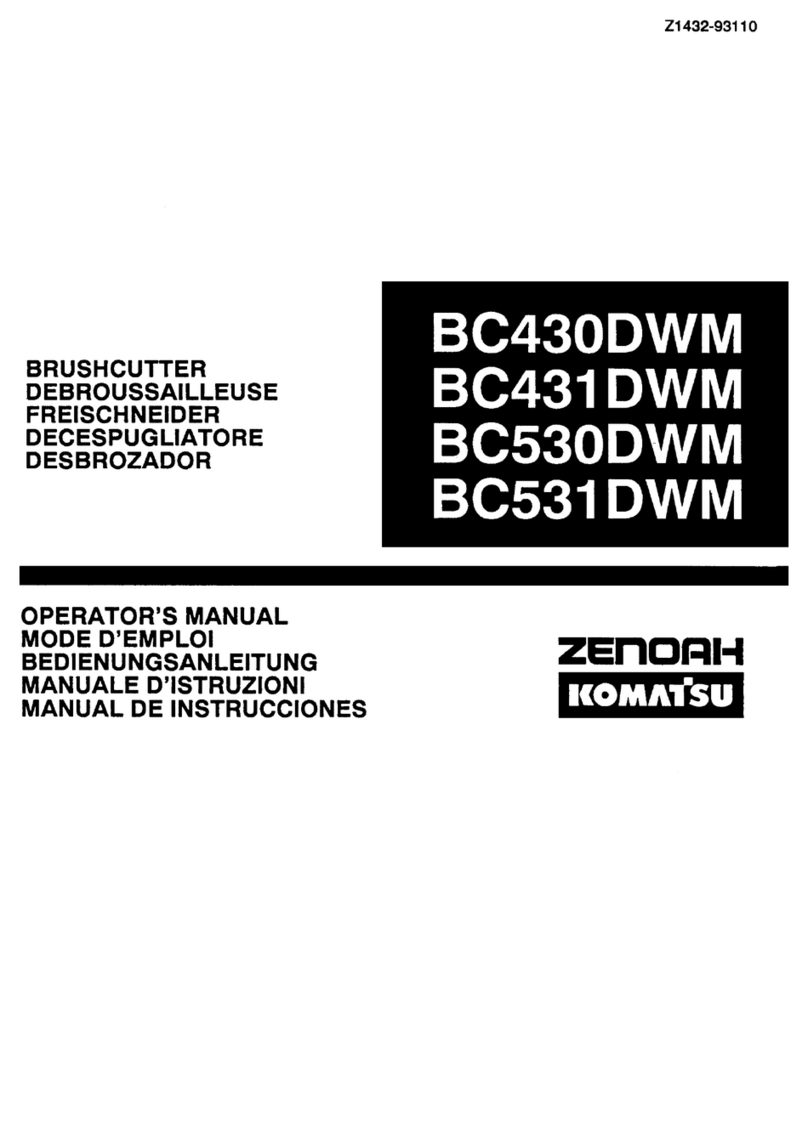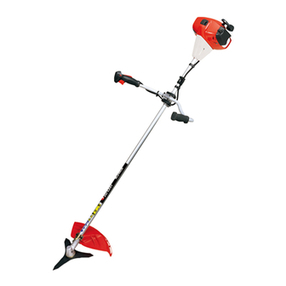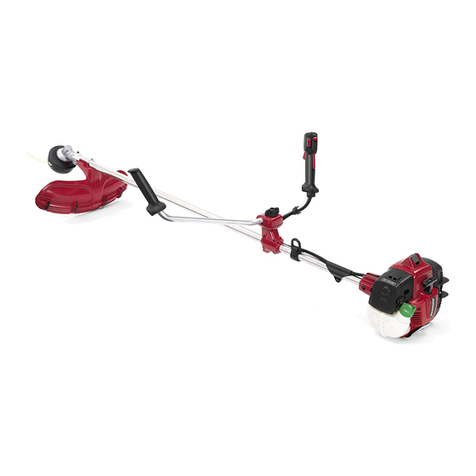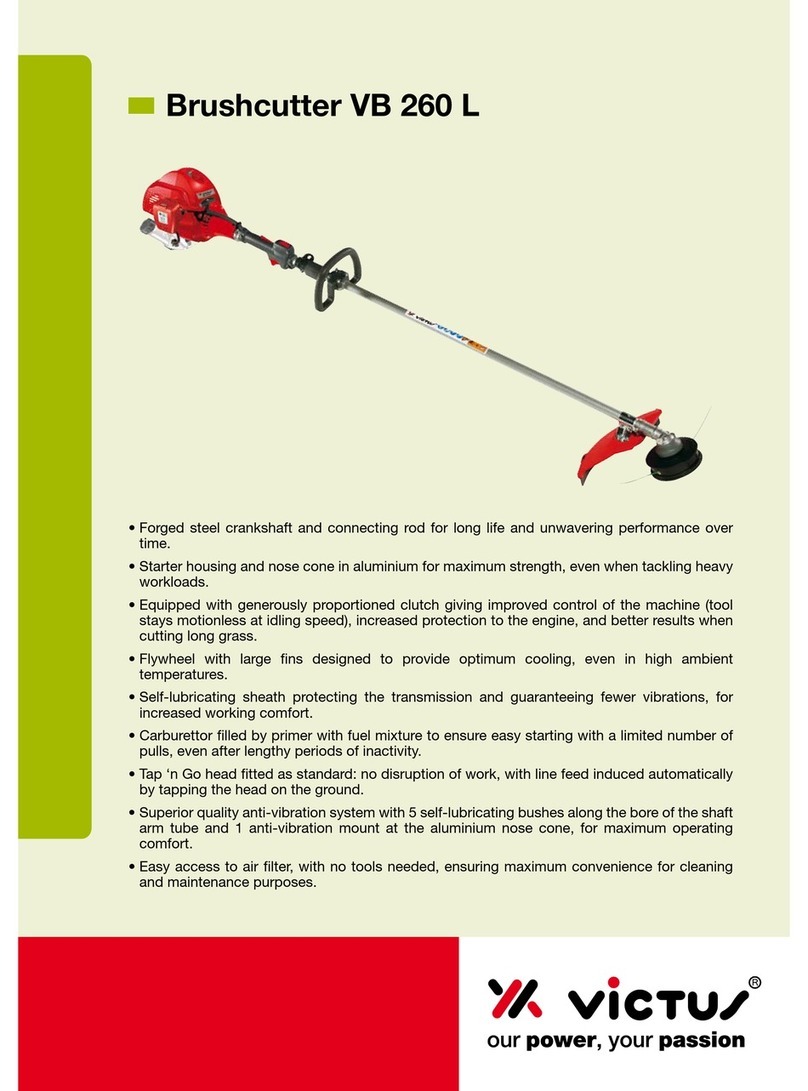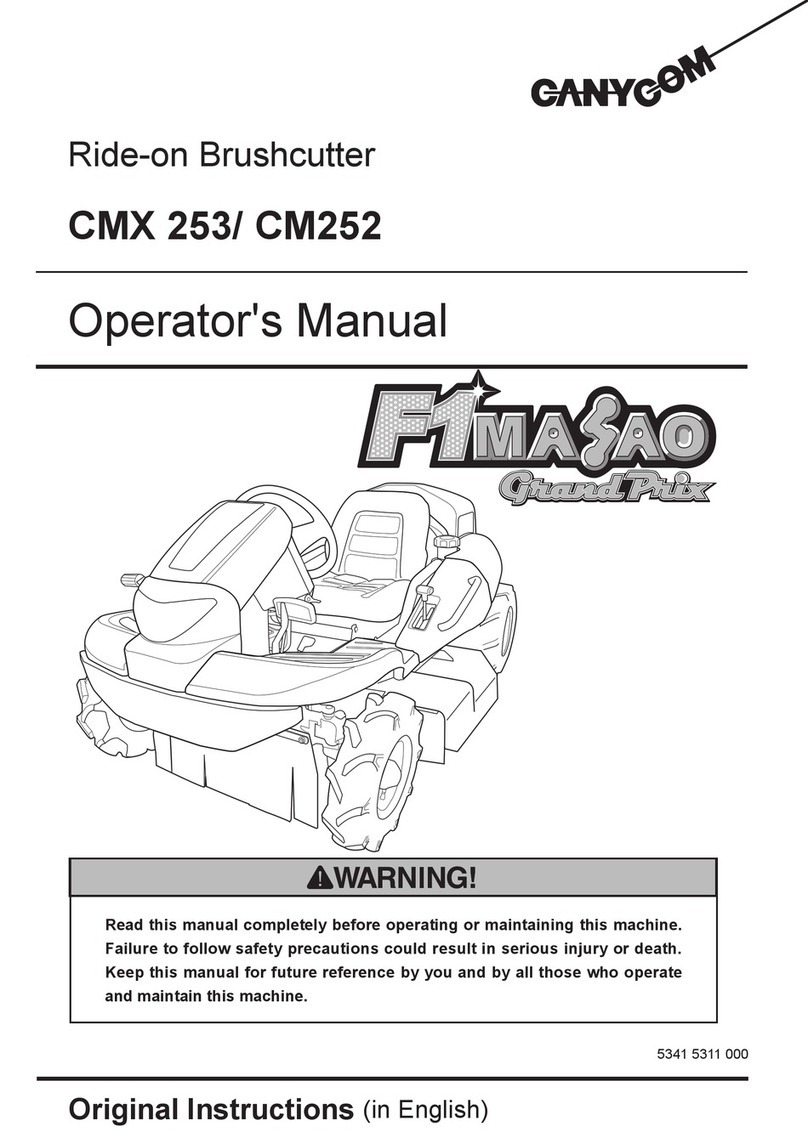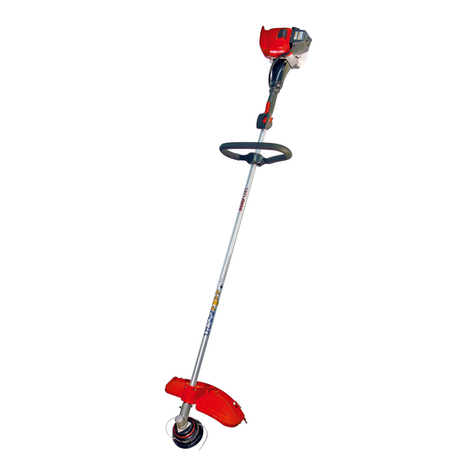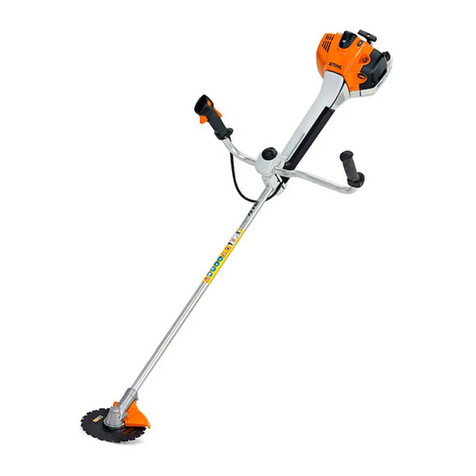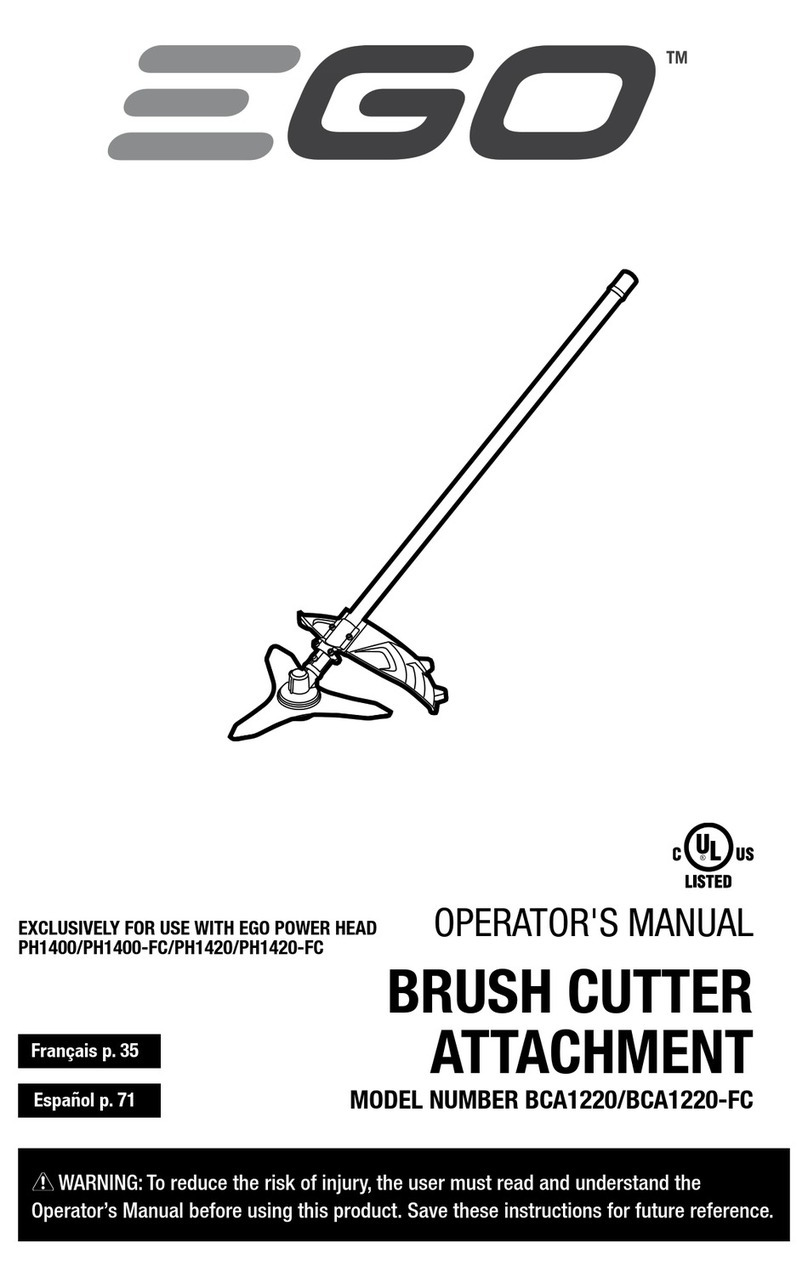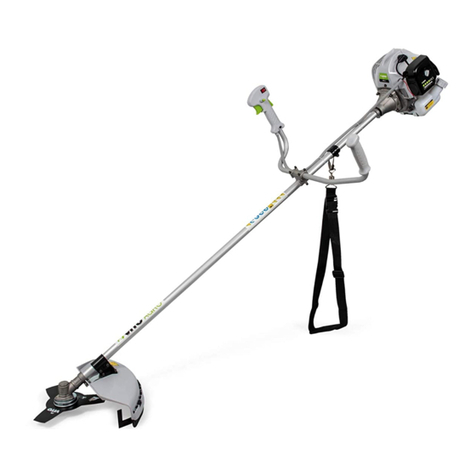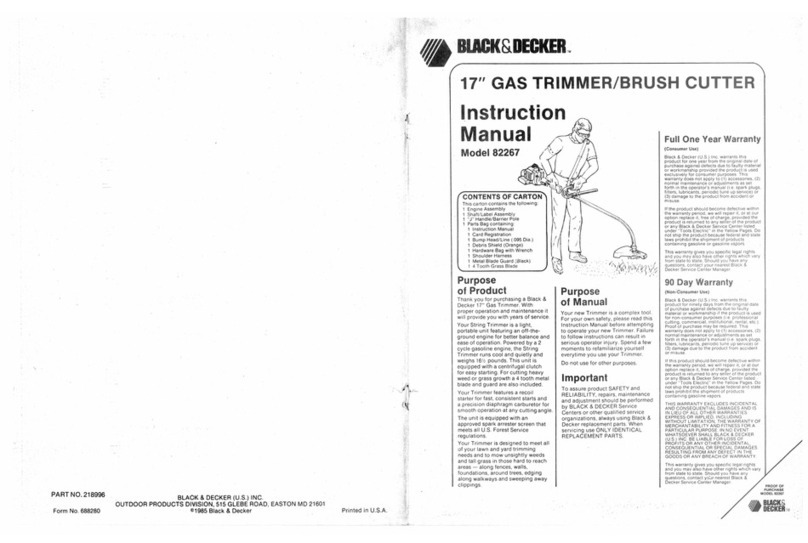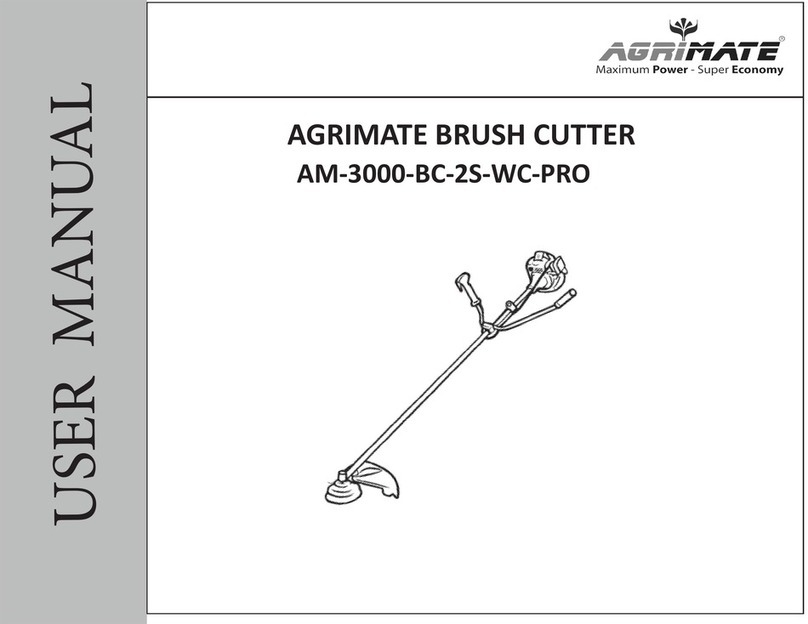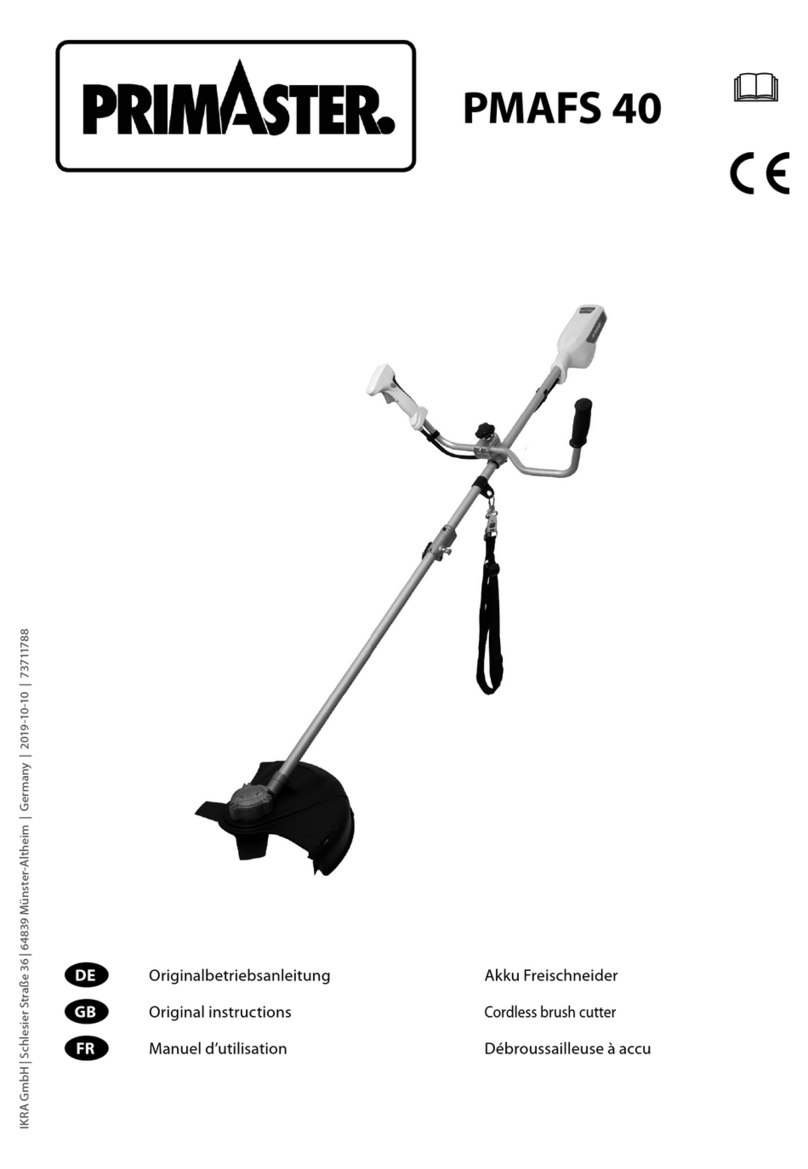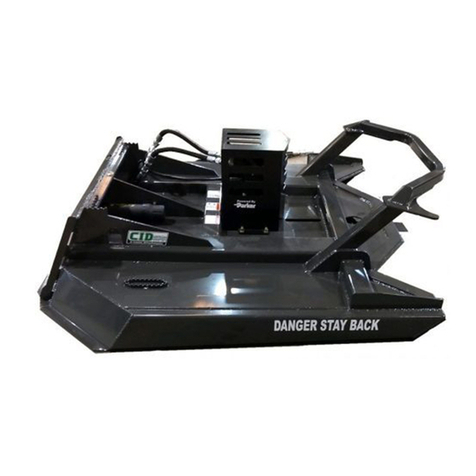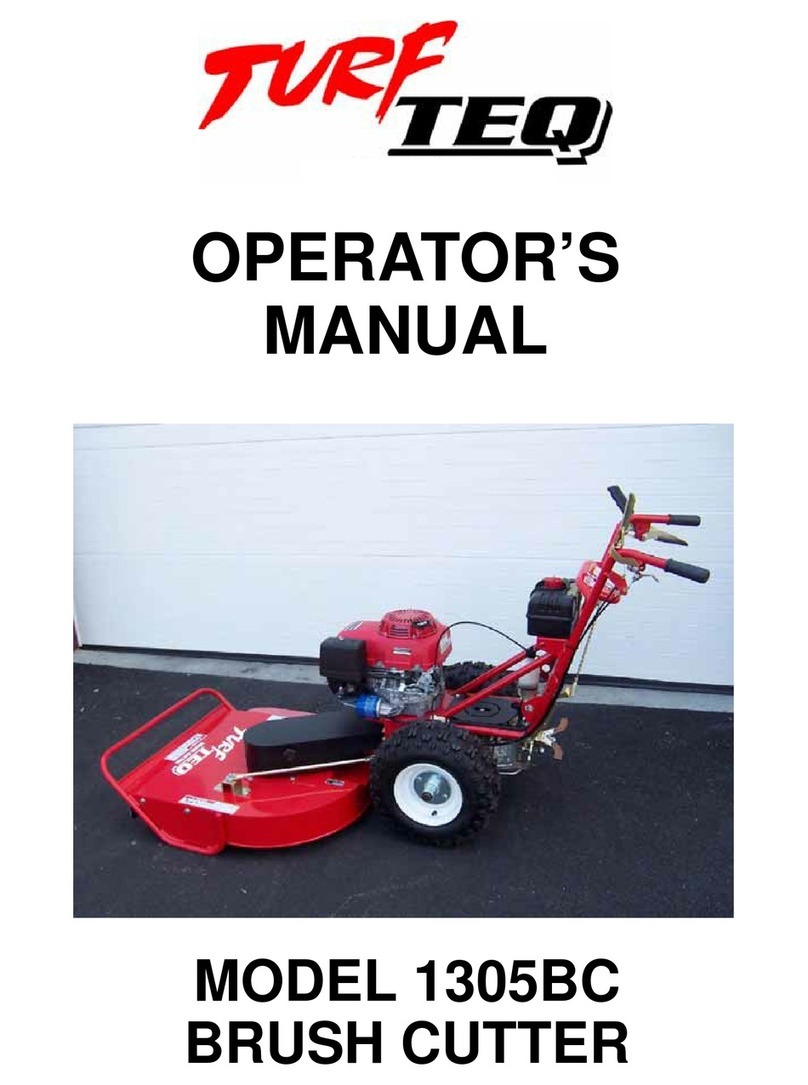5
person using the product should be considered
a hazardous area into which no one should
enter while the product is in use, and when
necessary yellow warning rope, warning signs
should be placed around the work area. When
work is to be performed simultaneously by two
or more persons, always check the presence
and locations of others so as to maintain a
distance each person sufficient to ensure
safety.
c. Make sure that there are no loose screws or
bolts, fuel leaks, ruptures, dents, or any other
problems which might interfere with safe
operation. Be especially careful to check that
there is nothing wrong with the blades or with
the joints by which the blades are attached to
the product.
d. Never use blades that are bent, warped,
cracked, broken or damaged in any way.
e. Keep the blade always sharp.
f. Filing the cutting edges, keep the end corner
sharp and round the root of the edge.
g. Check the bolt to fasten the blade and be sure
the blade turns smoothly without abnormal
noise.
■NOTES ON STARTING THE ENGINE
1. Take a careful look around to make sure that
no obstacles exist within a perimeter of 15m or
less around the product.
2. Place the body of the product onto the ground
in a flat clear area and hold it firmly in place so
as to ensure that neither the blades nor the
throttle come into contact with any obstacles
when the engine starts up.
3. Place the throttle into the idling position when
starting the engine.
4. After starting up the engine, if the blades
continue to rotate even after the throttle has
been moved fully back, turn off the engine and
check the throttle wire and other parts.
■
KICKBACK SAFETY PRECAUTIONS
•Adangerous reaction may occur when the
spinning blade contacts a solid object in the
critical area. It is called Kick back. As a result,
5. Whistle (for collaboration or emergency)
6. Hatchet or saw (for removal of obstacles)
c. Never use your product when wearing pants
with loose cuffs, when wearing sandals, or
when barefoot.
■WARNING CONSIDERING HANDLING OF
FUEL
a. The engine of this product is designed to run
on a mixed fuel which contains highly
flammable gasoline. You should never store
cans of fuel or refill the fuel tank in any place
where there is a boiler, stove, wood fire,
electrical sparks, welding sparks, or any other
source of heat or fire which might ignite the
fuel.
b. Smoking while operating the product or refilling
its fuel tank is extremely dangerous. Always
be sure to keep lit cigarettes away from the
product at all times.
c. When refilling the tank always turn off the
engine first and take a careful look around to
make sure that there are no sparks or open
flames anywhere nearby before refueling.
d. If any fuel spillage occurs during refueling, use
a dry rag to wipe up spills before turning the
engine back on again.
e. After refueling, screw the fuel cap back tightly
onto the fuel tank and then carry the product to
a spot 3m or more away from where it was
refueled before turning on the engine.
■THINGS TO CHECK BEFORE USING THE
PRODUCT
a. Before beginning work, look around carefully to
get a feel for the shape of the land, or grass to
be trimmed, and whether or not there are any
obstacles which might get in the way while
working, and remove any obstacles which can
be cleared away.
b. The area within a perimeter of 15m of the
3. Safety Precautions
